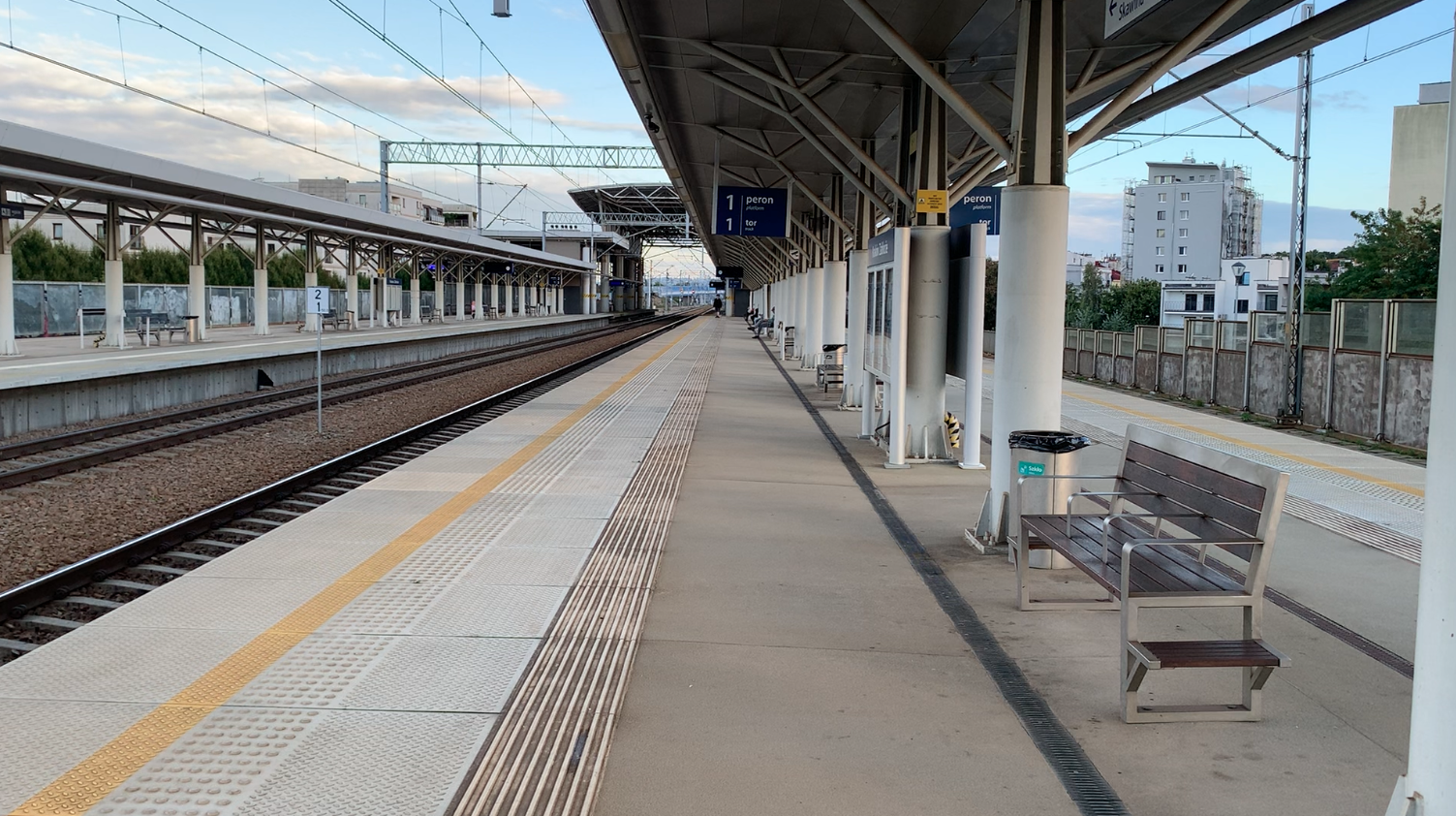Kraków 2025-09-28
Kraków Zabłocie train station.
Geographic coordinates: 50.048N 19.957E. Elevation 209 m.
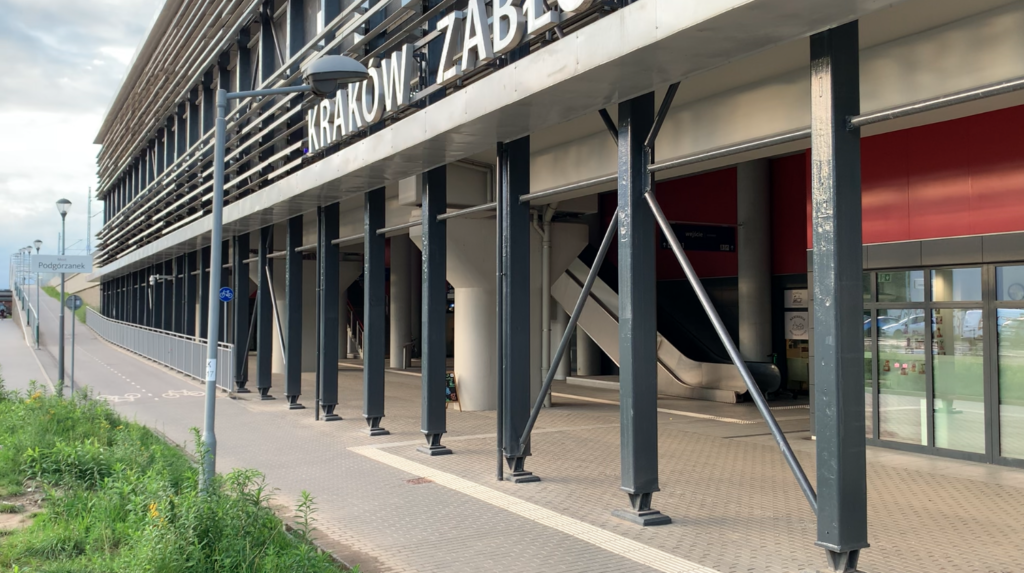
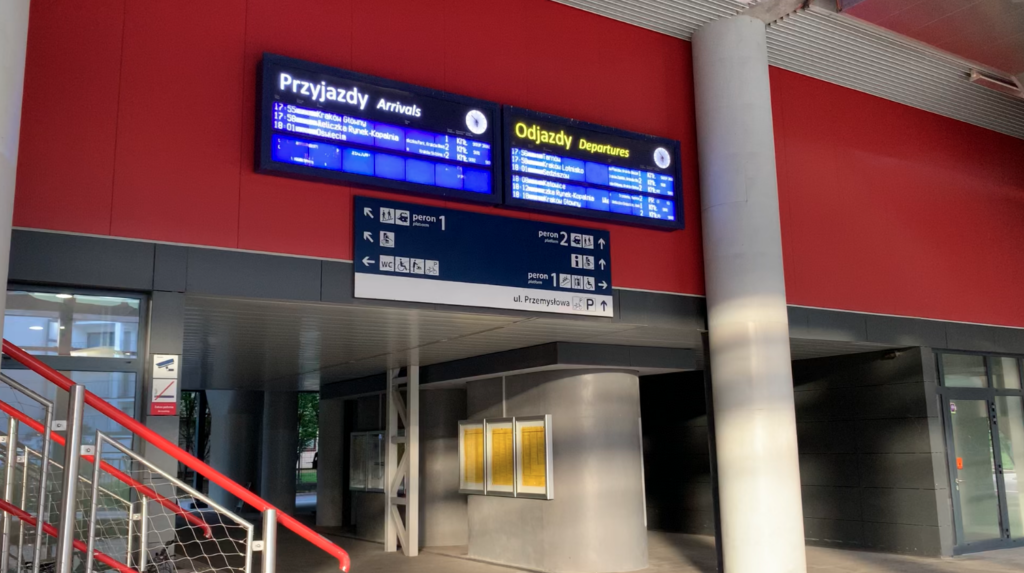
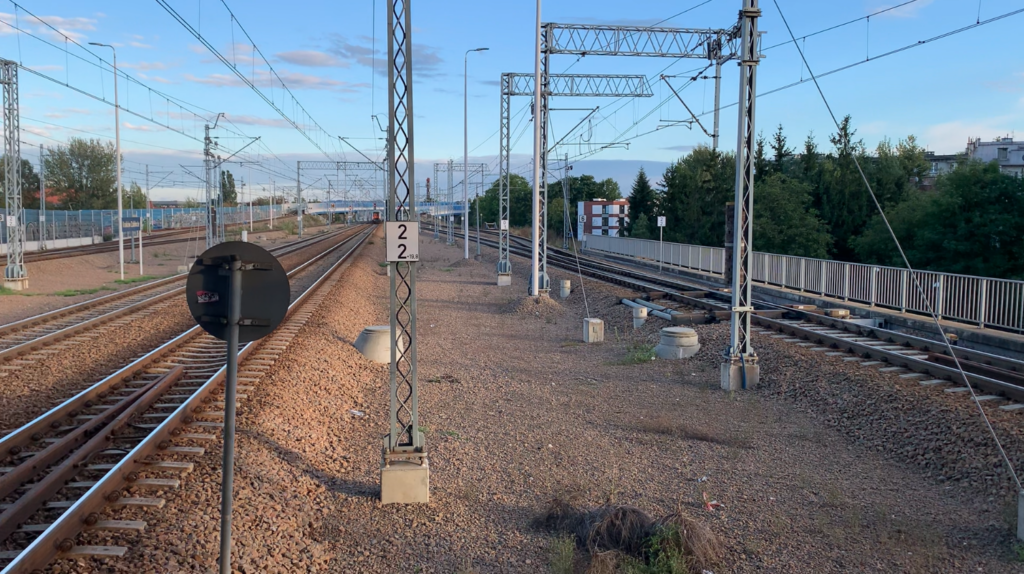
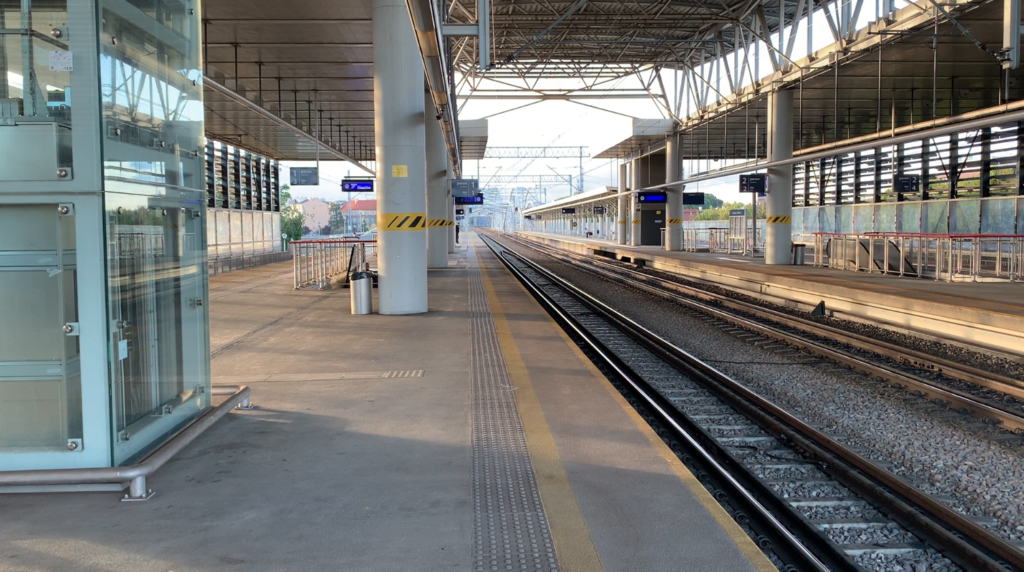
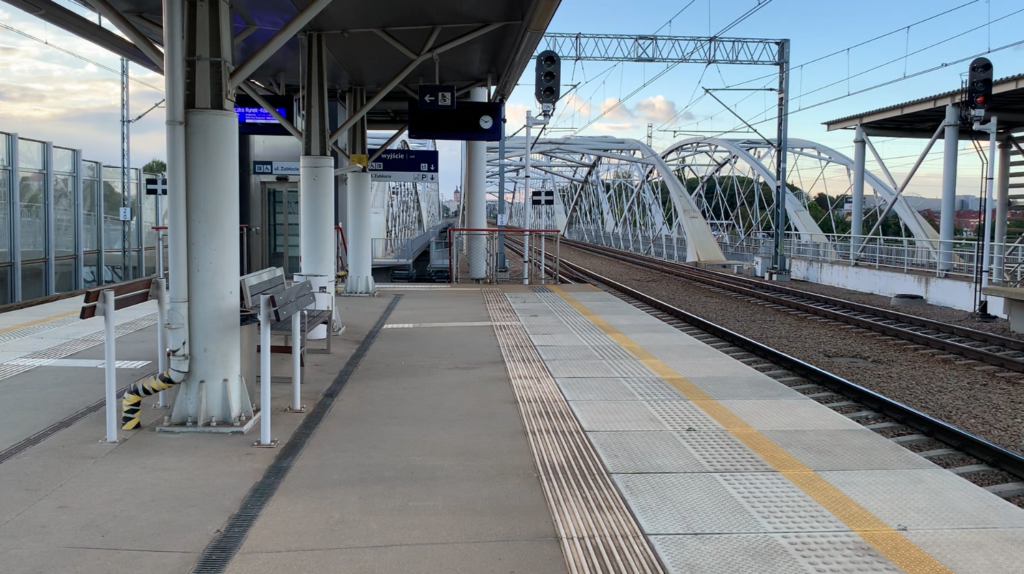
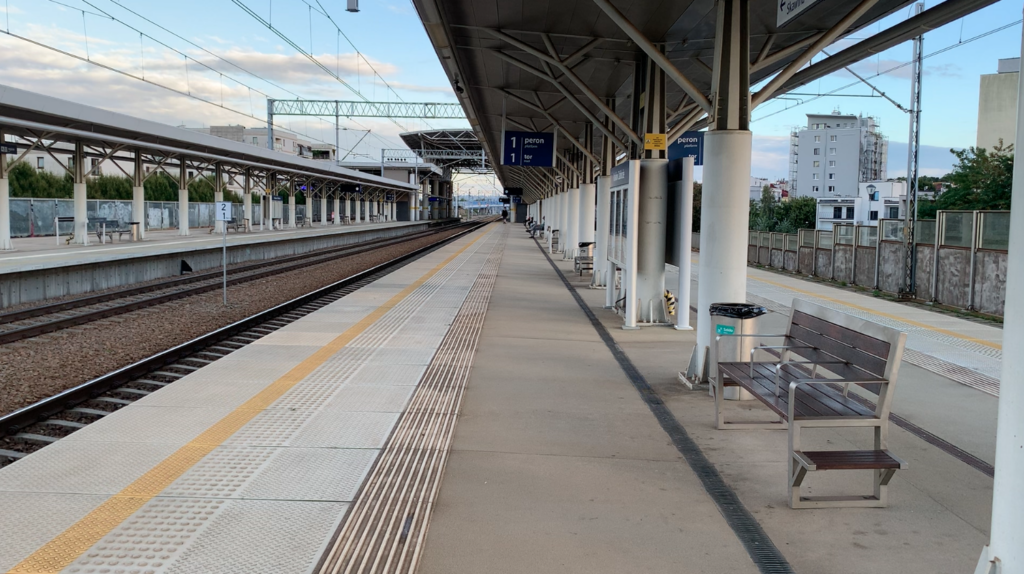
The Kraków Zabłocie railway station is located in the Podgórze district, on the right bank of the Vistula River, in the so-called Zabłocie district. The name “Zabłocie” means the area located “Beyond the Blotter.” In the 14th century, King Casimir the Great sold the village of Czyżowa, located in modern-day Zabłocie, to the town of Kazimierz. A port was built within the village, facilitating the trade of salt from the Wieliczka mine. Hence, the port was called the “Salt Port.”
In the mid-19th century, the construction of a railway line from Kraków towards Tarnów contributed to the development of Zabłocie. The area became very attractive to industrialists. A meat processing plant, a mill, a brewery, a glassworks, and other businesses began to be established here. Eventually, a railway station called “Wisła” was built right on the Vistula River. On the other side of the Vistula River was a railway station called “Grzegórzki.” This second station served nearby industrial plants, such as the meat processing plant, the Zieleniewski factory (later transformed into the Szadkowski factory), and passenger traffic to Kazimierza Wielka.
In the final years of the 19th century, railway plants, loading yards, and warehouses were built in Zabłocie. The urban area gradually expanded, facilitated by the liberal Austrian system and lower tax and customs burdens.
In 1903, Podgórze was hit by a major flood, which, however, did not halt its economic development. New, improved flood embankments were built. In 1915, Zabłocie, along with Podgórze, was incorporated into the city of Kraków.
At the beginning of the 20th century, Zabłocie was home to factories: Józef Gorecki’s Factory of Mesh, Furniture, Iron Structures, and Ornamental Wrought Goods (from 1890); Lazar Korngold’s Ironworks (from 1897); the “Polcynk” Galvanizing Plant (from 1925); Czesław Śmiechowski’s Soap Factory (from 1913); the “Wódki Krakowskie” Spirits Factory (from 1919); and later the “Krakus” Spirits Factory. The Małopolska Enamelware and Sheet Metal Factory “Rekord” (from 1930), later known as the Schindler Factory. The Kraków Glassworks “Wawel” (from 1930). The Władysław Jankowski Box Factory (from 1920). The Match Factory “Znicz” (from 1922). The Metal Products and Umbrella Mechanisms Factory “Superior” (from 1930).
During the German occupation period of 1939–1945, Zabłocie was the location of warehouses for aviation, artillery, and communications equipment for war purposes. Using the slave labor of Poles and Polish Jews, the Germans produced field kitchens, mess tins, canteens, radiators for internal combustion engines, and other small spare parts for cars, airplanes, and radio stations in the captured factories. After World War II, the district continued its industrial development. More factories were established: the Telpod – Unitra Electronic Plant, then Telpod S.A. (operating from 1946 to 2002). A large portion of the electronic components production went to the military. From 1950, the “Miraculum” cosmetics factory operated in Zabłocie. The Institute of Glass and Ceramics was established at the glassworks.
In 1952, a bridge over the Vistula River was built in Łęg, improving communication between Zabłocie and Nowa Huta, which was then under construction. In 2001, the Kotlarski Bridge was built, connecting Zabłocie with Grzegórzki. In 2010, a pedestrian and bicycle bridge, named the Father Bernatek Footbridge, was built on the site of the first bridge over the Vistula River, which connected Kazimierz with Podgórze.
The district’s main streets were Lipowa, Kącik, Zabłocie, and Jana Dekerta. In 1991, Zabłocie became part of Podgórze as District XIII. Zabłocie is bordered by the Vistula River to the north, Stoczniowców Street to the east, Powstańców Wielkopolskich Avenue to the south, and Krakusa Street to the west.
In 1989, as a result of economic and political changes, many factories closed. The area became attractive to developers, who built housing estates containing over 700 apartments and flats on the site of the demolished factory buildings. This took place between 2013 and 2019. Between 2018 and 2019, the former Miraculum factory building was converted into a new office building.
PKP Kraków Zabłocie.
The large number of industrial plants, which employed thousands of people, necessitated a more convenient commute. The dual-track railway line No. 91, Kraków Główny – Medyka, was a convenient location for a passenger stop. Previously, Kącik Street and Lipowa Street were connected by a pedestrian tunnel in the railway embankment. Therefore, stairs leading to new railway platforms were constructed here. The platforms extended towards Zabłocie Street and the Vistula River. At the other end of the platforms, stairs were also built to Zabłocie Street. The stop opened in 1979. Local trains stopped at the stop, primarily EMU EN57s.
There were two single-edge platforms. The platforms were very simply furnished. Each had three shelters, protecting passengers from rain and strong sunlight. Waste bins and railway information displays were installed. Street lighting was installed. Benches were not installed. Platform 1 was on the west side, and Platform 2 was on the east side.
Between 2015 and 2018, the Kraków Zabłocie passenger stop was completely rebuilt. A significant portion of the railway embankment on the Lipowa Street side was demolished. In its place, under the tracks, retail and service areas were created. Architectural barriers for disabled passengers were removed. Escalators and elevators leading to the platforms were installed. The platforms were completely rebuilt, raised and roofed. An audio train information system, electronic displays, and display cabinets with train information were installed. Benches and garbage cans were placed on the platforms. As before, the platforms offer exits towards Lipowa Street and Zabłocie Street. The platforms are 200 meters long.
Between 2019 and 2023, the Kraków Zabłocie railway station underwent another expansion. This was related to the launch of the “District Line” reconstruction program, which shifted the station from a double-track system to a four-track system. Two local tracks and two long-distance train tracks were built. Additionally, Kraków received the long-awaited railway link No. 624, connecting Kraków Zabłocie and Kraków Bonarka, which contributed to an increase in the number of trains from Skawina to Kraków Główny. It’s worth noting that freight trains haven’t passed through Kraków Główny station for decades. Freight trains are routed through the bypass – Kraków Olsza station.
As a result of the work, the platforms were double-edged. One track was added to each side. In theory, this seemed straightforward, but in reality, the changes were significant. Most importantly, the tracks and electric traction were replaced. Long-distance trains on the Kraków Płaszów – Kraków Główny section now travel at 100 km/h. Previously, the speed was 40-60 km/h. The lower section of the station has also been expanded, with ticket machines for intercity trains installed there.
Written by Karol Placha Hetman
